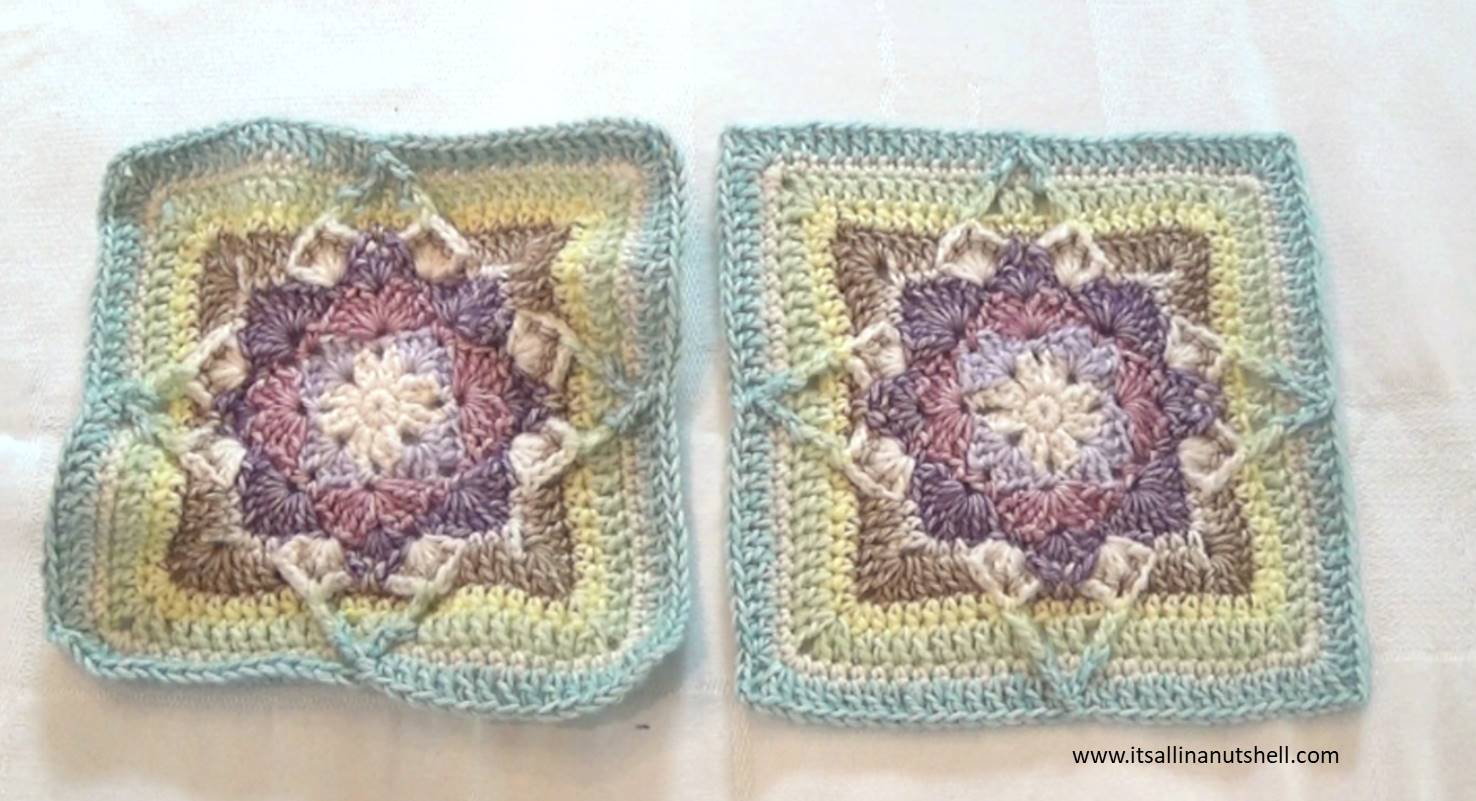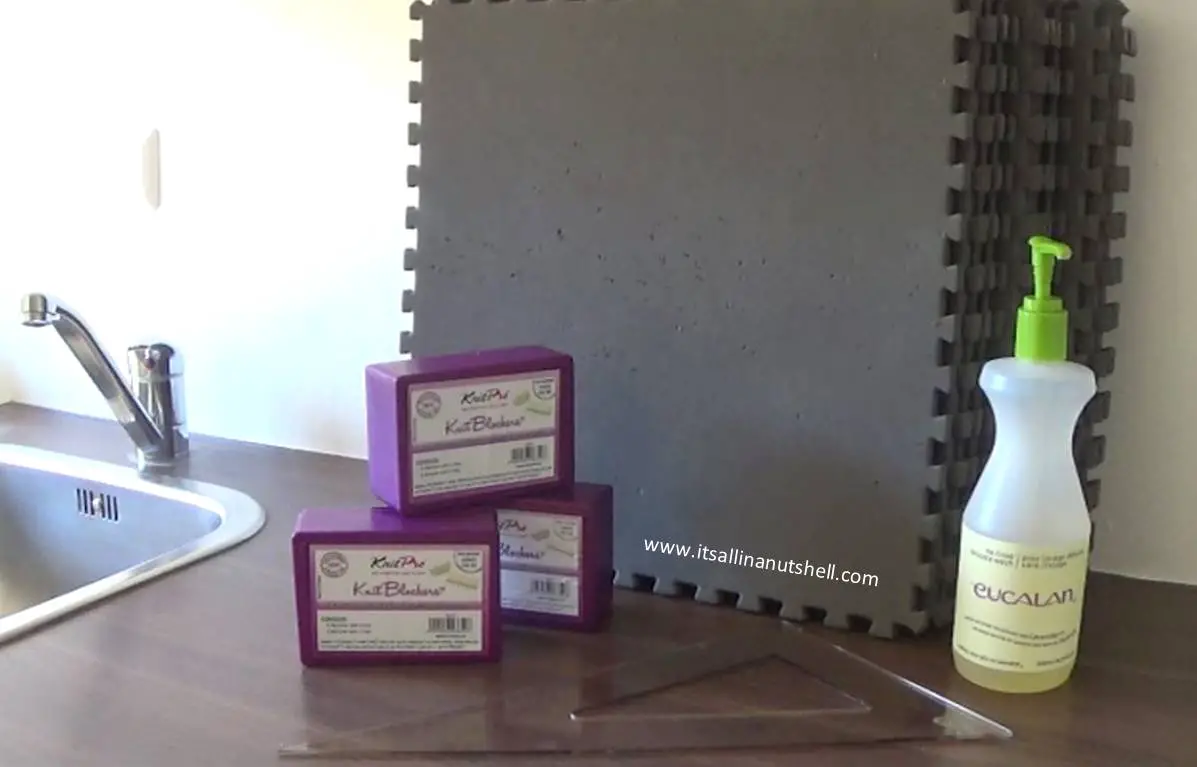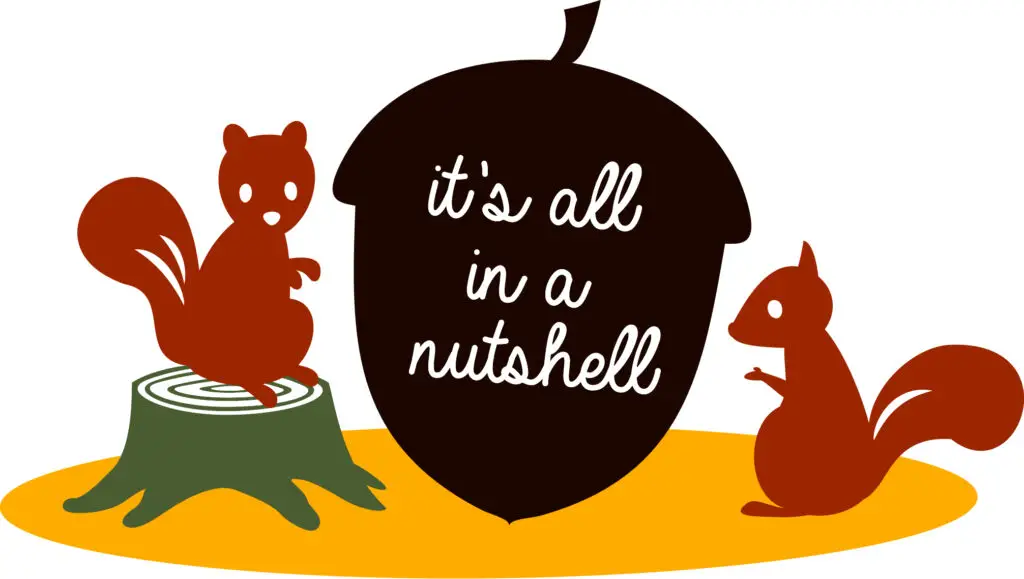When you have finished making something new, you might think to yourself, “it could look better…” The reason is that newly made items usually have edges curling over and corners that are not completely straight. There is a way to fix all that, at it’s called blocking. In this tips and tricks post I would like to show you different methods to block your work.

Resources
- Add TLC Blanket to your Ravelry library
- Full PDF pattern containing all 8 parts plus links to all the videos
- All RIGHT HANDED Video tutorials in one YouTube playlist
- All LEFT HANDED Video tutorials in one YouTube playlist
- Scheepjes Chunky Monkey yarn (100g/107m)
- 5.0mm (US size H/8) and 6.5mm (US size K/10.5) hook
- Find help in my It’s all in a Nutshell Facebook Group
- Nederlandse vertaling HIER
- Social Media #itsallinanutshell
What is blocking?
Blocking is the process of pulling your work into shape, and setting the fabric fibers in place. In general, all natural fibers block extremely well, just making them damp is enough to set the fibers. Natural fibers include cotton, wool, silk, bamboo and any fiber produced from natural materials. Man-made fibers on the other had do need a bit more effort to block properly. Man-made fibers include acrylics, polyester, and microfiber.
Should I always block my work?
Yes, in my opinion you should always block your work. There are many people who say “I never block my work and it looks fine”. I don’t doubt for a second that your work looks fine, but I believe it could look even better. It’s the difference between good and great. The secret to professional looking crochet items is blocking them to obtain the perfect shape.
Here you see an example of the difference blocking makes. On the left a square that has not been blocked, on the right a square that has. This square is part of Demelza, and the yarn is Scheepjes Stone Washed. After blocking, the edges are straight, and the square looks much more professional.

You can buy Scheepjes Stone Washed from Wool Warehouse (UK), Jimmy Bean Wools (USA), Love Crafts (USA), The Knitting Network (UK), Caro’s Atelier (NL/EU), or your local Scheepjes Stockist.
What do you need to block your work?
There are a few things you need to block your work. You will always need blocking pins or blockers, a foam underground, and if you are blocking larger items a triangle with a right angle is a great help. If you spray or wet block your work, you will also need Eucalan, a no-rinse detergent. If you spray block, a plant sprayer is an essential part of your toolkit. If you wet block, you will need a washing machine. Finally, if you steam block, you will need an iron or a steamer.

Spray blocking
There are different ways to block your work. A method that is perfect for smaller items such as squares, motifs and shawls is spay blocking. With spray blocking you pin an item into shape, spray it with a mixture of water and Eucalan, and then let it dry naturally. In this video I show you how to spray block a square.
Wet blocking
I use wet blocking for large, finished items such as blankets. To wet block, soak your work in warm water with Eucalan, and remove the excess water by spinning your work in the washing machine on the lowest available setting. Now pin your blanket into shape. In this video I show you how I wet block my TLC Blanket.
Steam blocking
A third method, that I personally never use, is steam blocking. This method is in essence the same as spray blocking, with the difference that the item is not sprayed with water, but with hot steam from an iron or steamer. It’s really important not to touch your work with the iron or steamer when steam blocking because you could permanently damage the fibers or even melt the fibers in the case of acrylic yarns. And that risk is also why I never use steam blocking, I find it too dangerous.
Learn to crochet and make a TLC Blanket of your own
If you want to make a TLC Blanket of your own, you can find all the information you need HERE. I have all the information available in English and Dutch.

#itsallinanutshell
If you are making something with one of my patterns or one of my videos, I would love to see your work. Use the hashtag #itsallinanutshell on Instagram to help me find it, share your work in my It’s all in a Nutshell Crochet Nuts group on Facebook or tag me in one of your posts.
With love,
Esther

Follow me on
Facebook, YouTube, Ravelry, Instagram
This post contains affiliate links. Please read my disclosure and copyright policy. All opinions are my own and I only link to products I use or would use. Thank you for using the links on my blog and supporting my work.
Copyright (c) 2014-2025 It’s all in a Nutshell Creations. All rights reserved.
Discover more from It's all in a Nutshell Crochet
Subscribe to get the latest posts sent to your email.

